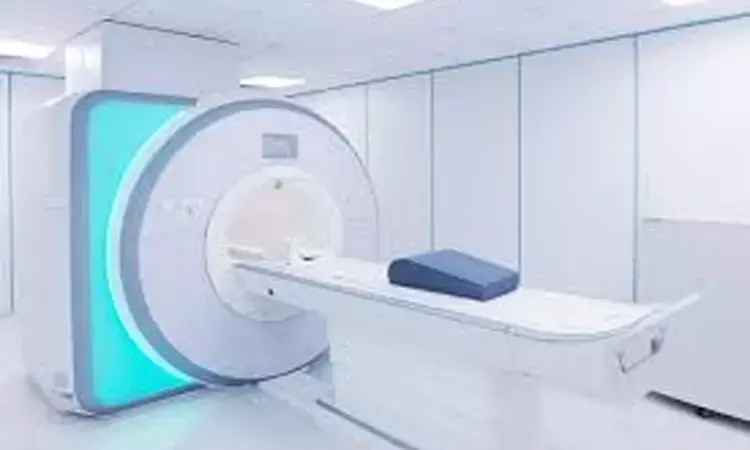- Home
- Medical news & Guidelines
- Anesthesiology
- Cardiology and CTVS
- Critical Care
- Dentistry
- Dermatology
- Diabetes and Endocrinology
- ENT
- Gastroenterology
- Medicine
- Nephrology
- Neurology
- Obstretics-Gynaecology
- Oncology
- Ophthalmology
- Orthopaedics
- Pediatrics-Neonatology
- Psychiatry
- Pulmonology
- Radiology
- Surgery
- Urology
- Laboratory Medicine
- Diet
- Nursing
- Paramedical
- Physiotherapy
- Health news
- Fact Check
- Bone Health Fact Check
- Brain Health Fact Check
- Cancer Related Fact Check
- Child Care Fact Check
- Dental and oral health fact check
- Diabetes and metabolic health fact check
- Diet and Nutrition Fact Check
- Eye and ENT Care Fact Check
- Fitness fact check
- Gut health fact check
- Heart health fact check
- Kidney health fact check
- Medical education fact check
- Men's health fact check
- Respiratory fact check
- Skin and hair care fact check
- Vaccine and Immunization fact check
- Women's health fact check
- AYUSH
- State News
- Andaman and Nicobar Islands
- Andhra Pradesh
- Arunachal Pradesh
- Assam
- Bihar
- Chandigarh
- Chattisgarh
- Dadra and Nagar Haveli
- Daman and Diu
- Delhi
- Goa
- Gujarat
- Haryana
- Himachal Pradesh
- Jammu & Kashmir
- Jharkhand
- Karnataka
- Kerala
- Ladakh
- Lakshadweep
- Madhya Pradesh
- Maharashtra
- Manipur
- Meghalaya
- Mizoram
- Nagaland
- Odisha
- Puducherry
- Punjab
- Rajasthan
- Sikkim
- Tamil Nadu
- Telangana
- Tripura
- Uttar Pradesh
- Uttrakhand
- West Bengal
- Medical Education
- Industry
Increased MRI and CT scans linked to excessive CO2 emission

Unjustified clinical variance in the use of MRI and CT scans results in considerable CO2 emissions among nations with similar rates of growth, says an article published in European Journal of Internal Medicine.
Global health is seriously threatened by pollution, and there is rising interest in methods to lower emissions brought on by healthcare systems. Unwanted clinical variation, or fluctuation in the use of healthcare services that is not attributable to variations in the sickness or preferences of patients, may be a preventable source of CO2 when it is linked to overuse. In order to assess the CO2 emissions owing to unjustified differences in the usage of MRI and CT scans among nations in the G20 region, Ludovico Furlan and colleagues undertook this study.
Seven G20 nations having statistics on the utilization of CT and MRI scans were chosen from the archive of the Organization for Economic Co-operation and Development. For these tests, the yearly electric energy consumption per 1000 people in each country was computed (T-Enex-1000), and the median and lowest values were compared. We calculated the national energy and related tons of CO2 that may be avoided annually based on such disparities.
The key findings of this study were:
Researchers calculated a considerable quantity of possibly preventable emissions per year using the data that was provided and discovered a significant variance in T-Enex-1000 (median value 1782 kWh, range 1200-3079 kWh) (range 2046–175120 tons of CO2).
In order to effectively reduce these emissions, it would be necessary to clear between 1.2 and 1.7 times the size of the greatest German forest, or between 71900 and 104210 acres, of forestland in Germany (Bavarian National Forest).
The unjustified clinical variance in the utilization of MRI and CT scans among the seven major G20 nations greatly increases CO2 emissions. The environmental effect of unnecessary tests, operations, and treatments should be thoroughly evaluated, and Choosing Wisely Campaign guidelines may include environmental costs as pertinent considerations for healthcare professionals, stakeholders, patients, and people.
Reference:
Furlan, L., Di Francesco, P., Tobaldini, E., Solbiati, M., Colombo, G., Casazza, G., Costantino, G., & Montano, N. (2023). The environmental cost of unwarranted variation in the use of magnetic resonance imaging and computed tomography scans. In European Journal of Internal Medicine. Elsevier BV. https://doi.org/10.1016/j.ejim.2023.01.016
Neuroscience Masters graduate
Jacinthlyn Sylvia, a Neuroscience Master's graduate from Chennai has worked extensively in deciphering the neurobiology of cognition and motor control in aging. She also has spread-out exposure to Neurosurgery from her Bachelor’s. She is currently involved in active Neuro-Oncology research. She is an upcoming neuroscientist with a fiery passion for writing. Her news cover at Medical Dialogues feature recent discoveries and updates from the healthcare and biomedical research fields. She can be reached at editorial@medicaldialogues.in
Dr Kamal Kant Kohli-MBBS, DTCD- a chest specialist with more than 30 years of practice and a flair for writing clinical articles, Dr Kamal Kant Kohli joined Medical Dialogues as a Chief Editor of Medical News. Besides writing articles, as an editor, he proofreads and verifies all the medical content published on Medical Dialogues including those coming from journals, studies,medical conferences,guidelines etc. Email: drkohli@medicaldialogues.in. Contact no. 011-43720751


